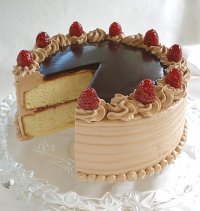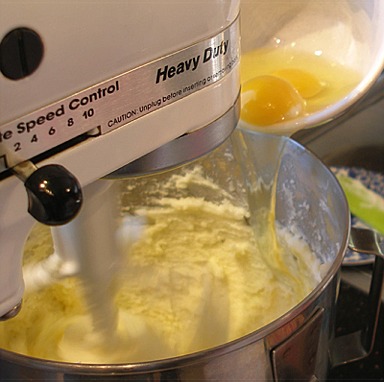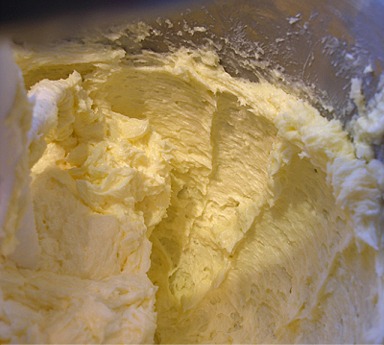 Cake and cookie recipes that call for more than one egg typically call for either adding them one at a time or premixing the eggs and then adding them in a steady stream. It takes extra time to do instead of adding all the eggs in at once. Is this slower baking technique really necessary?
Cake and cookie recipes that call for more than one egg typically call for either adding them one at a time or premixing the eggs and then adding them in a steady stream. It takes extra time to do instead of adding all the eggs in at once. Is this slower baking technique really necessary?
This how to baking technique is used with the Ultimate Butter Cake or UBC Recipe Tutorial.
So any time you add more than a single egg to creamed butter, it’s best to do one at a time and whisk (or beat) it slowly to give the mixture time to thicken and emulsify. (In other recipes, sometimes quick whisking is called for to quickly disperse and suspend one liquid throughout the other.) In some baking recipes, such as with cakes, the emulsion begins with the butter (an emulsion) and sugar, and again when you add the eggs, and continues while you add the dry ingredients and/or the cream, milk or buttermilk. The fact is, like oil and vinegar, eggs and butter don’t mix naturally. It’s a matter of chemistry: Fat and liquid by nature are unmixable, and the goal when mixing a recipe is to form a water-in-fat emulsion. Butter is at least 80 percent fat, while egg whites contain large amounts of water.
A third ingredient, called a liaison or emulsifier, is added because the two ingredients will separate, in this case being the egg. The emulsifier stabilizes the mixture. Mayonnaise is a classic example of emulsification; it is mixture of oil and vinegar or lemon juice that is emulsified by the addition of egg yolk, which contains the emulsifier lecithin. Emulsifiers are also found in egg white, gelatin, skim milk and mustard.
The emulsion will happen successfully when the ingredients are at the same temperature. Otherwise, the ingredients will not combine into a smooth batter or a previously created emulsion will break or curdle, weeping liquid. If not stable, the batter will loose air cells. This results in a baked cake that is grainy or flat in texture, dry and flavorless, look uneven and may even sink.
SARAH SAYS: With today's stand mixers, I have found through 25 years of scientific study, that it is NOT necessary to use room temperature eggs; in fact, they can be used COLD, right from the refrigerator. The creamed butter and sugar mixture may curdle at first, but it will become smooth as beating continues and/or when you add in the flour in the next mixing step. Make sure you work the eggs in slowly; it not only helps to incorporate more air in the batter and but also adds emulsifiers slowly from the egg yolks and will not break the fat (from the butter and egg yolks) and water emulsion (from water contained in the butter or fat and eggs). It results in a creamy batter that holds in the air bubbles in, previously created through creaming and beating.
HOW TO TIPS:
After creaming the fat and sugar together, the first step in making a Shortened cake, such as a Buttercake or Pound cake, you add in the eggs.
1. With the mixer on low, add the eggs one at a time and beat for 20 seconds after each addition.

2. After the eggs have been added, increase the mixer speed to medium and beat the mixture for 2 minutes. (If the eggs are cold, the batter will curdle slightly. It's ok. It will come together as the batter warms from the beaters. ) Set the kitchen timer to help you keep track of the time. The mixture will become fluffy and aerated.

SARAH SAYS: The butter and eggs are an excellent temperature. Notice in the photo that it forms ridges on the side of the mixing bowl after the beaters pull through the mixture; the batter is tacky and not too warm so it sticks to the side of the mixing bowl! The batter has become lighter in color as it takes on air bubbles and SOMEWHAT fluffy, as well!


